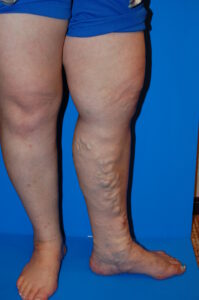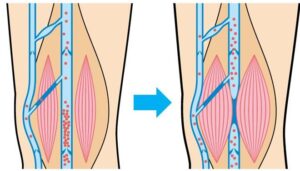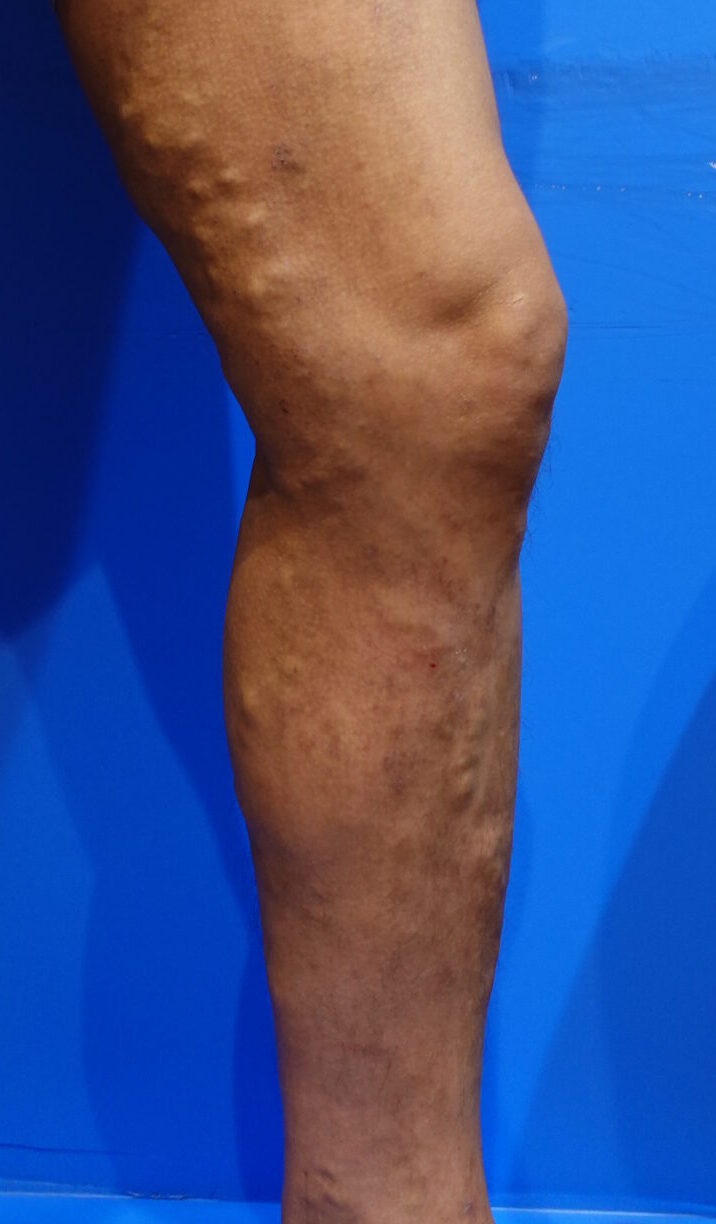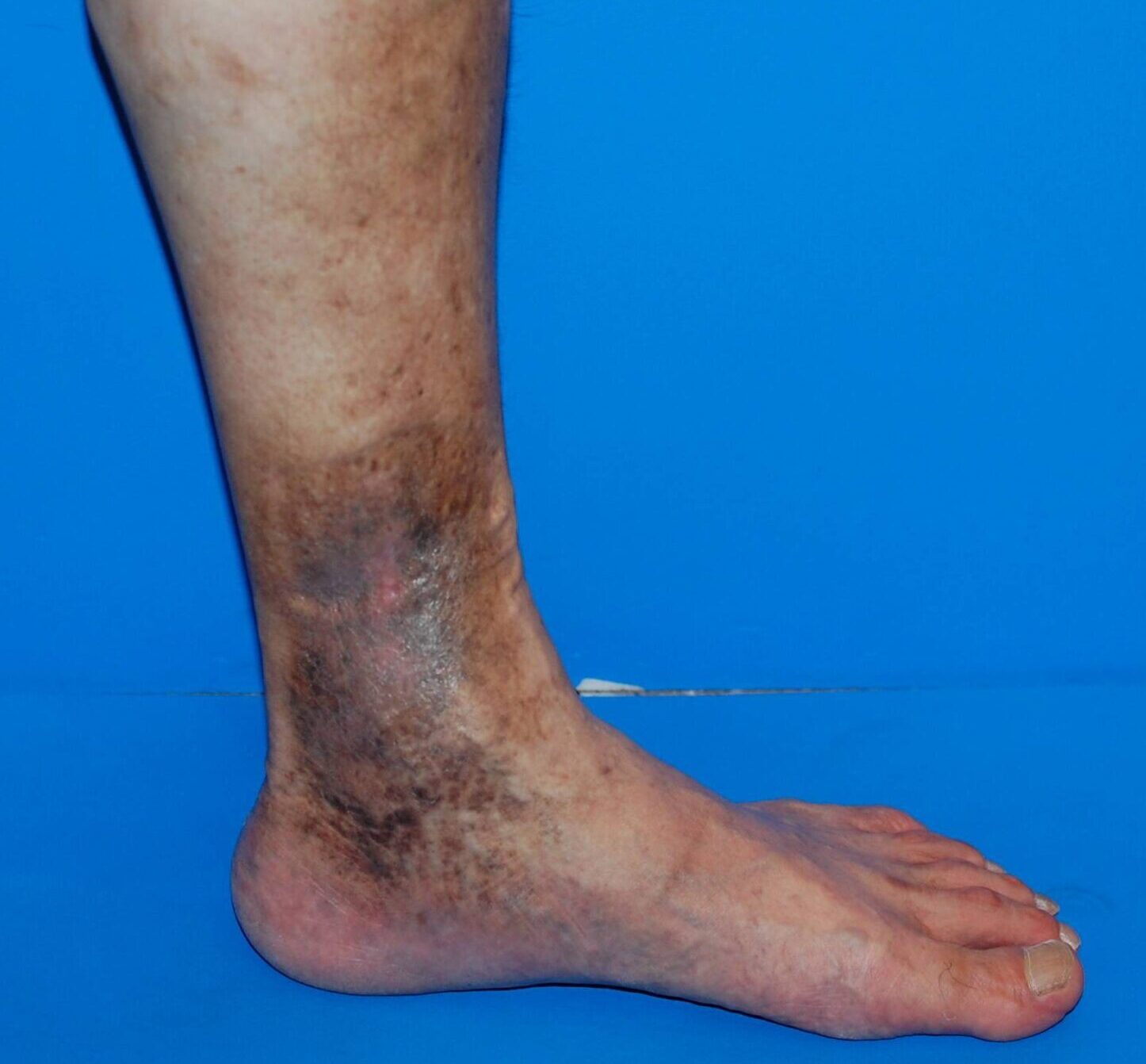What is varicose vein?
Varicose veins are a condition in which the veins in the legs bulge out like a lump.

Reasons for developing varicose veins
Blood flow begins at the heart.
Blood pumped from the heart and flowing through the arteries is rich in nutrients and oxygen, giving it a bright red color.
On the other hand, the garbage (called waste products) from the legs returns to the heart through the veins, giving it a dark black color.
For example, arteries serve as water supplies, and veins serve as sewers.
Veins flow against the Earth’s gravity to return blood to the heart. Therefore, there are two mechanisms.
One is the pumping action of the leg muscles.
When your leg muscles contract, they forcefully compress your veins and push blood toward your heart.
It’s just like when you press a tube of mayonnaise or toothpaste, the contents come out.
This is why the feet are said to be “the second heart”, and the calf muscles play an especially important role.

Another mechanism is the venous valve.
Veins have valves every few centimeters that prevent blood from flowing backwards, preventing blood from flowing downward.
If the leg muscles are not used due to long hours of standing work, the pump function of the leg muscles will not work. When the anti-reflux valves in the veins stop functioning due to pregnancy, childbirth, genetics, etc., blood drops downward, causing blood congestion.
Causes and mechanisms of varicose veins
Venous valves prevent blood from falling due to gravity, but for various reasons, the valves may not close properly.
The main causes include the following.
1.Standing work (desk work)
If you work as a cook, hairdresser, security guard, dry cleaner, or have a job that requires you to stand in the same place for long periods of time without walking around, the pumping action of your leg muscles will not work.
This causes blood to pool in the veins of your legs, putting strain on the valves and preventing them from closing.
Even if you don’t stand at work, if you stay still in the same position for a long time, the pumping action of your leg muscles will not work. This puts a strain on the venous valves, although this is not as much as it is for people who work standing up.
2.Pregnancy
There is data that one in two women who have given birth will develop varicose veins.
There are three possible reasons for this:
a. Increased maternal blood volume
b. Influence of female hormones
c. Compression of veins by the uterus
a. Increased maternal blood volume
During pregnancy, the amount of blood flowing through the mother’s body increases by 40 to 50% as she has to nurse the baby. As a result, veins throughout the body become swollen, and veins in the legs, which are particularly susceptible to the effects of gravity, may become thicker.
b. Influence of female hormones
During pregnancy, the amount of estrogen, a female hormone, increases approximately 100 times. Estrogen has a dilating effect on blood vessels, so veins tend to become thicker towards the end of pregnancy.
c. Compression of veins by the uterus
As the pregnancy progresses and the fetus grows larger, the enlarged uterus compresses the veins in the pelvis. This makes it difficult for the blood flowing from the legs to pass through, creating an hourglass-like congestion and tending to make the veins thicker.
Veins that have been stretched out will return to their original size after childbirth, but some women’s veins, which have become thicker like a stretched rubber band, do not return to their original size, resulting in varicose veins. Generally, varicose veins tend to become more noticeable after the second pregnancy.
3.Heredity
If your parents have varicose veins, it is said that 90% of them will inherit the condition. If one of your parents has varicose veins, there is data that shows that there is a 25% chance of inheriting varicose veins for men and 60% for women, so this is something to keep in mind.
4. Aging
As we age, the elastic membranes that make up the vein walls atrophy and the smooth muscles degenerate, causing the vein walls to gradually become brittle. Therefore, when you stand for long periods of time, blood accumulates in the veins of your legs, making them more likely to stretch.
5. Obesity
Although it is not a very strong factor, there is data that severely obese women are more likely to develop varicose veins.
6.Constipation
Straining during defecation creates abdominal pressure. High intra-abdominal pressure can put more pressure on the veins in your abdomen, putting more stress on the venous valves than necessary.
7. Gender
In women, the female hormone progesterone increases during the menstrual cycle. This progesterone causes the vein walls and valves to stretch, which is why women are more likely to develop varicose veins.
Click below👇 if you wish to consult and receive treatment from a specialist in varicose veins.



